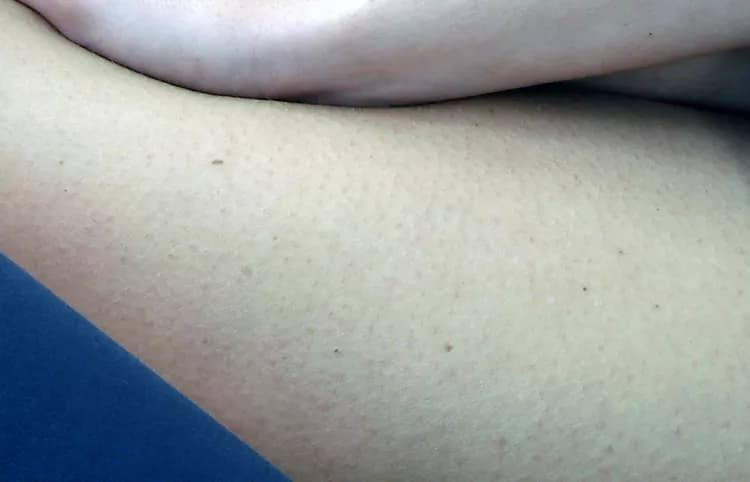A largescale study that included women from Germany and China has demonstrated a link between levels of traffic-related air pollution and air pollution-associated gases with the formation of dark spots on the skin, known as lentigines. The most pronounced changes were observed on the cheeks of Asian women over the age of 50. The report is published in the Journal of Investigative Dermatology.
"In addition to particulate matter, traffic-related air pollution is characterized by increased concentration of nitrogen dioxide (NO2). While NO2 exposure is known to be associated with low lung function and lung cancer, the effect of NO2 on human skin has never been investigated. This is important because environmentally-induced lung and skin aging appear to be closely related," explained lead investigator Jean Krutmann, MD, of the IUF-Leibniz Research Institute for Environmental Medicine, Dusseldorf, Germany.
Two groups were studied. The first included 806 Caucasian German women who were part of the SALIA study (Study on the influence of Air pollution on Lung function, Inflammation and Aging). The average age was 73.5 years (range 67 to 80 years) and 20% had a history of smoking. These women reportedly spent an average of 2.6 hours a day in the sun. The second group included 743 Han Chinese women from the Taizhou region who were somewhat younger than the SALIA group, with an average age of 59 (range 28 to 70 years). Twenty percent of this group had a history of smoking, with a reported average daily sun exposure of 3.5 hours. Many more women in the SALIA group reported using cosmetics with sun protection (61% vs. 4.2%). The mean levels of NO2exposure were 28.8 µg/m3 in the SALIA study and 24.1 µg/m3 in the Taizhou China group.
No association was seen between levels of NO2 and lentigenes' formation on the back of the hands or forearms, however, exposure to NO2 was significantly associated with more lentigenes on the cheeks in both German and Chinese women older than 50 years. Overall, an increase of 10 µg/m3 in NO2 concentration was associated with approximately 25% more dark spots. The spots were visually evaluated by trained personnel according to photo reference scales and quantified using a validated skin aging score system (SCINEXA).
The investigators performed sensitivity analysis to see whether they could pinpoint whether it was the concentration of particulate matter or NO2 gas that had a greater impact on dark spot formation. They found that the NO2gas had a slightly stronger effect than the particulate matter concentration..
"To the best of our knowledge, this is the largest epidemiological study demonstrating a link between traffic-related air pollution and the formation of lentigenes," noted co-investigator Li Jin, PhD, of Fudan University's State Key Laboratory of Genetic Engineering and Ministry of Education Key Laboratory of Contemporary Anthropology, Collaborative Innovation Center for Genetics and Development, School of Life Sciences, Shanghai, China, and the Fudan-Taizhou Institute of Health Sciences, Taizhou, Jiangsu, China. "The findings also strengthen the concept that the pathogenesis of lentigenes might differ depending on the anatomical site."
Lentigenes, also known as liver spots, are small, darkened areas of the skin. Although they may first appear small, they may enlarge and separate patches may merge. They are most commonly found on the face, forearms, hands, and upper trunk. Usually brown in color, lentigenes can appear yellow-tan to black. Lentigenes are more common in light-skinned individuals and in the US, solar (sun-associated) lentigenes are noted in 90% of Caucasians older than 60 and 20% of those younger than 35 years. Lentigenes, which contain an increased number of the melanin-forming cells of the skin (melanocytes), are generally benign, although some forms may be pre-cancerous.
The above post is reprinted from materials provided by Elsevier. Note: Materials may be edited for content and length.
Disclaimer: DoveMed is not responsible for the adapted accuracy of news releases posted to DoveMed by contributing universities and institutions.
Primary Resource:
Hüls, A., Vierkötter, A., Gao, W., Krämer, U., Yang, Y., Ding, A., ... & Jin, L. (2016). Traffic related air pollution contributes to development of facial lentigines: further epidemiological evidence from Caucasians and Asians.Journal of Investigative Dermatology.
Related Articles
Test Your Knowledge
Asked by users
Related Centers
Related Specialties
Related Physicians
Related Procedures
Related Resources
Join DoveHubs
and connect with fellow professionals


0 Comments
Please log in to post a comment.